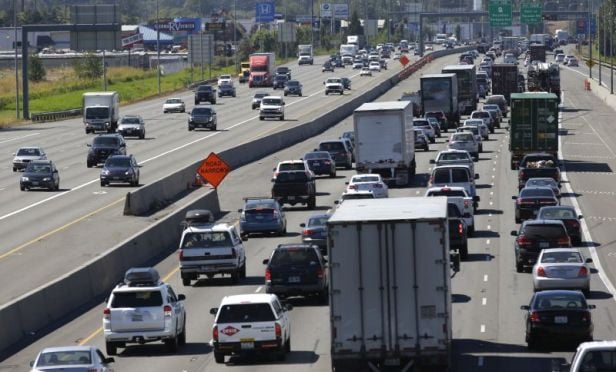 Truck and automobile traffic mix on Interstate 5, headed north through Fife, Washington, near the Port of Tacoma. (AP Photo/Ted S. Warren)
Truck and automobile traffic mix on Interstate 5, headed north through Fife, Washington, near the Port of Tacoma. (AP Photo/Ted S. Warren)
Federal safety advocates are targeting three of the worst habits by drivers that kill more than 10,000 people a year: speeding, impaired driving and distractions from electronic gadgets.
The U.S. National Transportation Safety Board unveiled its “Most Wanted” list of safety enhancements on Monday and three of the 10 focused on driver behaviors that could help reduce the annual death toll on the roadways that now exceed 37,000 a year.
Recommended For You
Want to continue reading?
Become a Free PropertyCasualty360 Digital Reader
Your access to unlimited PropertyCasualty360 content isn’t changing.
Once you are an ALM digital member, you’ll receive:
- Breaking insurance news and analysis, on-site and via our newsletters and custom alerts
- Weekly Insurance Speak podcast featuring exclusive interviews with industry leaders
- Educational webcasts, white papers, and ebooks from industry thought leaders
- Critical converage of the employee benefits and financial advisory markets on our other ALM sites, BenefitsPRO and ThinkAdvisor
Already have an account? Sign In Now
© Touchpoint Markets, All Rights Reserved. Request academic re-use from www.copyright.com. All other uses, submit a request to [email protected]. For more inforrmation visit Asset & Logo Licensing.







